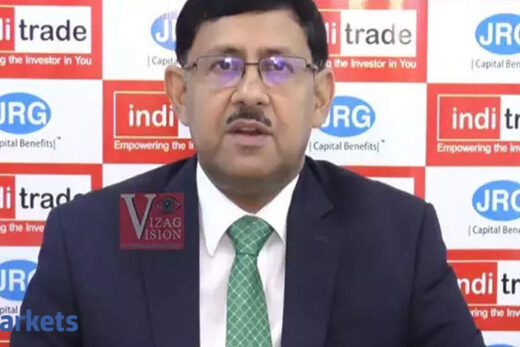At the beginning of December, steel stocks hit their pre-Covid levels, overcoming the shock of March 2020. And in May 2021, they have started seeing profit booking. Essentially, the good times for them lasted six months.
As steel and other metal prices have started to decline, analysts have also started trimming their expectations on these stocks. A series of rating downgrades for the high flying metal stocks have already begun.
Credit Suisse on Tuesday downgraded metals to ‘underweight’ from an earlier ‘overweight’ stance. The major reason behind the rally was demand-supply mismatch, which is decreasing. “This will result in limited upside for the stocks from the sector,” it said.
“We book profits on metals, reversing positions added in December 2020 and earlier, as P/B relative to the market is near a 10-year high. It can go higher and stay elevated in a super-cycle, but we believe the current surge in apparent demand is due to an extreme inventory cycle and not a structural increase,” said Neelkanth Mishra, Co-head of Asia Pacific Strategy and India Equity Strategist at Credit Suisse.
The brokerage has downgraded
(price target Rs 1,250) and (Rs 450) to ‘neutral’ from ‘outperform’ and (Rs 550) to ‘underperform’ from ‘neutral’. It maintains ‘neutral’ on SAIL (Rs 140). It has also removed Tata Steel from its 30 stock model portfolio, but included Hindalco as it believes with the aluminum-to-steel price ratio near a two-decade low, an inversion is likely.
Analysts count a number of factors behind the change in their view. First, the impact of supply chain shock, which drove steel prices to record highs is easing; secondly, China is entering a weak demand season at a time when production continues to be very strong; thirdly, China said it would strengthen its management of commodity supply and demand to curb “unreasonable” increases in prices; and fourthly, ex-China production run-rate is catching up and at only 4 per cent below pre-Covid peak now, while demand is at pre-Covid peak.
Domestic steel prices quote at a discount to global prices. But despite an 18 per cent discount, Indian steel prices are at risk, say analysts. The buffer may not be enough if export prices follow the drop in China’s domestic prices, they add.
“The market is already witnessing a correction in steel and commodity stocks. The BSE Metal index is underperforming major indices. It is expected to correct another 5-7 per cent. Upside in metal stocks is also limited for the coming few days. The strategy should be to sell on rally,” said Vishal Wagh, Research Head, Bonanza Portfolio.
Analysts at Credit Suisse say the risk-reward is no longer favourable for steel stocks, and if you still want to invest in them, you should be selective. The key risk to their call is a sharp sequential improvement in global steel demand in H2 of CY21, China cutting steel production materially, or supply-side outages in iron ore driving steel prices higher.
Not everyone is equally bearish on the metal stocks. Some believe the correction in prices is temporary and will not last. They believe the heightened demand situation is likely to persist for some time.
“The recent dip in prices has been triggered by China’s crackdown on speculative trading. Also, this is a much-needed correction, since the prices have run up too much too fast. But the correction is unlikely to last long, since demand is likely to remain buoyant and the metal cycle appears to be on a long expansionary phase. Integrated players with captive mines will do well in this upcycle,” said VK Vijayakumar, Chief Investment Strategist at
.



